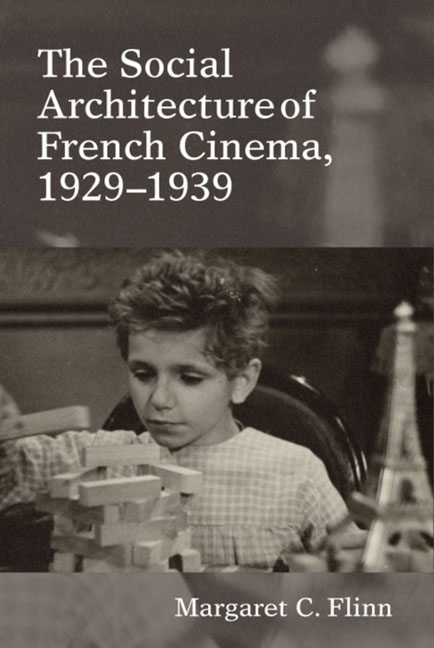Book contents
- Frontmatter
- Contents
- List of Illustrations
- Acknowledgements
- Introduction: An Architecture of Social Being
- 1 The Spatial Constitution of 1930s Documentary
- 2 René Clair's City Views: Realism and Studio Paris
- 3 Intertext and Political Margins in Jean Renoir's Boudu sauvé des eaux
- 4 Traversing Built History in Architectural Documentaries
- 5 Flâneuses and the Unmaking of Place
- 6 The Crowd as New Monumentality during the Popular Front
- Epilogue: Poetic Realism as Spatial Fable
- Notes
- Bibliography
- Filmography
- Index
4 - Traversing Built History in Architectural Documentaries
- Frontmatter
- Contents
- List of Illustrations
- Acknowledgements
- Introduction: An Architecture of Social Being
- 1 The Spatial Constitution of 1930s Documentary
- 2 René Clair's City Views: Realism and Studio Paris
- 3 Intertext and Political Margins in Jean Renoir's Boudu sauvé des eaux
- 4 Traversing Built History in Architectural Documentaries
- 5 Flâneuses and the Unmaking of Place
- 6 The Crowd as New Monumentality during the Popular Front
- Epilogue: Poetic Realism as Spatial Fable
- Notes
- Bibliography
- Filmography
- Index
Summary
Postmodern architecture in the wake of Robert Venturi is frequently credited with reintroducing history into architecture. But the filming of architecture in the 1930s, particularly in the militant films of the Popular Front had in fact already aligned the modernist architectural project with history. The crucial difference between the modernist association of architecture and history and that of postmodernism is that in the modernist case, history was not to be incorporated into the buildings’ design. Rather the buildings’ cinematographic representation affirmed the constructions’ relationship to architectural history in spite of the modernist revolutionary impulse toward a formalism and functionalism that indicated a marked break with architecture's immediate past. Modernist architecture was to be new, composed of forms and materials particularly adapted to contemporary life, but the filming of such architecture often situated its shapes in relationship to earlier architectural revolutions.
In the early 1980s, the first of Pierre Nora's landmark, multivolume Les Lieux de mémoire appeared. In a historical near miss, this product of Nora's EHESS seminars from 1978–81 almost overlapped with the definitive 1977 edition of Venturi's “second manifesto,” Learning from Las Vegas. In the Lieux de mémoire, Nora explained that a contemporary sense of rupture with history was the crucial factor in what he observed to be an explosion of interest in places where memory crystalizes or “finds refuge”:
[…] this specific moment in French history, a turning point in which a sense of rupture with the past is inextricably bound up with a sense that a rift has occurred in memory. But that rift has stirred memory sufficiently to raise the question of its embodiment: there are sites, lieux de mémoire, in which a residual sense of continuity remains. (Goldhammer trans. 1)
In the preface to the English-language edition, Realms of Memory, Nora defines a lieu de mémoire as “any significant entity, whether material or non-material in nature, which by dint of human will or the work of time has become a symbolic element of the memorial heritage of any community (in this case, the French community)” (Goldhammer trans. xvii). In this chapter, I will argue that the sense of historical rupture and corresponding interest in sites of memory as a means of reconfiguring our relationship to history diagnosed by Nora in the 1980s is analogous to the filming of sites within the architectural documentaries analyzed below.
- Type
- Chapter
- Information
- The Social Architecture of French Cinema1929–1939, pp. 84 - 111Publisher: Liverpool University PressPrint publication year: 2014



